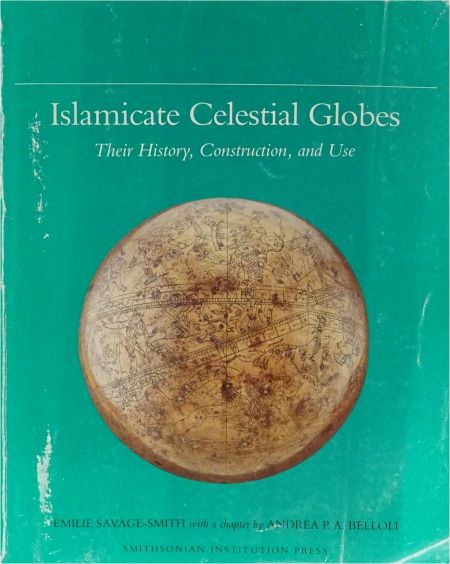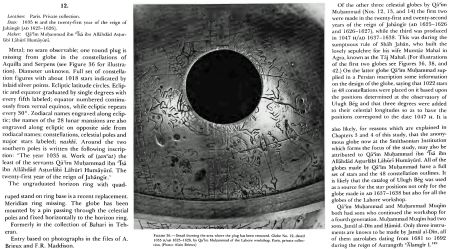Celestial brass sphere with 1018 silver stars.
Close to the two South poles, the following inscription: “The Hegira Year 1035. Work of the last of his servants Qa'im Muhammad ibn Isa ibn Allahdad Asturlabi Lahuri Humayuni. The 21st year of the reign of Jahangir ».
This type of model is part of the most sophisticated and complete category of all the models created at the time: with the spindles, the ecliptic, the constellations, the zodiac and the stars in silver inlays.
It also corresponds to an excellent positioning of the stars of the sky of the time.
The manufacture of the sphere is in one piece with lost wax.
The pouring hole was covered with a brass disk closing the sphere and completing the cartography, which has now disappeared.
References :
- Islamicate Celestial Globes – Their history, Construction, and Use – Emilie Savage-Smith – Smithsonian Institution Press – Washington, D.C. 1985 pp 224/225 et ill p 92 (photographs A. Brieuc et F.R. Maddison).
-Scientific Instrument Society – Bulletin n° 132 – « Of Making Celestial Globes There Seems No End » presenting in an article by Emilie Savage-Smith and illustrated fig. 4 p 4 a very close globe by Muhammad Muqim at Lahore dated 1049 H/ 1639 A.D. (Doha, Museum of Islamic Art (MW.146.1990)
Note : the sphere is presented on a later support in brass comprising two circular bases joined by 4 columns and resting on 4 feet buttons
Provenance : ex collection Bahari Téhéran.
Dimensions:
- sphere diameter c. 11,5 cm
- support height 11 cm - base diameter 16 cm / total height 16.5 cm
Lahore 1625/1626 - Hegira 1035.
SOLD TO A REKNOWN INTERNATIONAL MUSEUM
Also discover many more antique globes and armillary spheres in the dedicated section of our French website : « Globes et sphères armillaires ».




